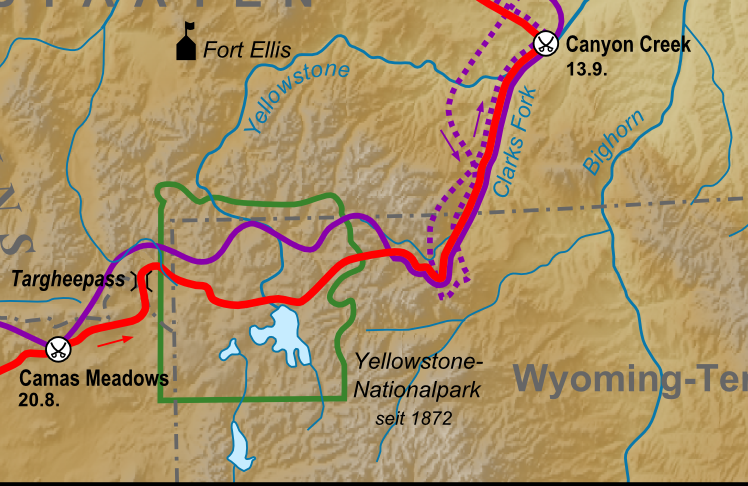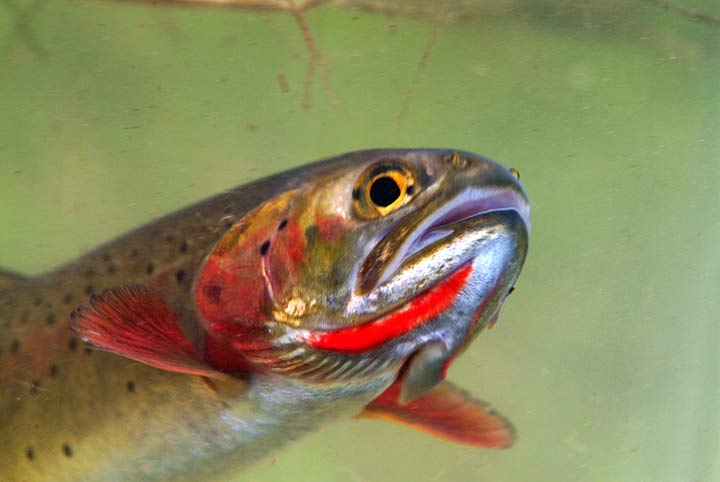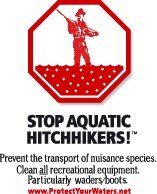NO MADDING CROWD
The Horse Knows The Way
a truly secret fishing hole
-------
.. Briefly: there is no better dry fly water in all of Yellowstone National Park. It's name is not in the lexicon of "experts" whose stories start with "I fished . . . .".. We don't recommend it to many folks. We don't mention it too often. We're not afraid it'll be "discovered" and become too crowded - it's too far from the road. In fact just forget that we mentioned it at all.
 |
| Red = Nex Perce, Purple = General Howard |
.. He prospected in Yellowstone at that time along with John Davis. He later prospected with Bart Henderson, Ed Hibbard, James Gourley, Sam Shively, Pike Moore, and Joe Brown. He discovered gold in the Cooke City area with Bart Henderson and others in 1869-70, naming their mine the Shoo Fly Mine.
.. During the next few years he helped Bart Henderson build the road from Bottler’s Ranch to Mammoth. He acted as guide for Superintendent Norris in 1877 in the northeastern portion of the park when Norris was looking for another northern approach to the park. He again guided Norris and photographer Henry Bird Calfee in 1880 on an exploration of the Hoodoo Basin.
.. Miller was one of the scouts under Gen. Howard during the Nez Perce War of 1877. Miller also did guiding and hunting out of Cooke City. When asked if he ever killed an Indian, he replied, "I never went to see, but I shot a good many." Later on he settled down in a cabin across the Yellowstone River from Yankee Jim.
.. Miller Creek and Miller Mountain were named after him. He died in 1913. His obituary described him as a "man of sterling character, a man without enemies of any kind, it is said, and a citizen who always had a kind word for everyone." [[ REFERENCE HERE ]] Thank you Geyser Bob.
-------






.jpg)






